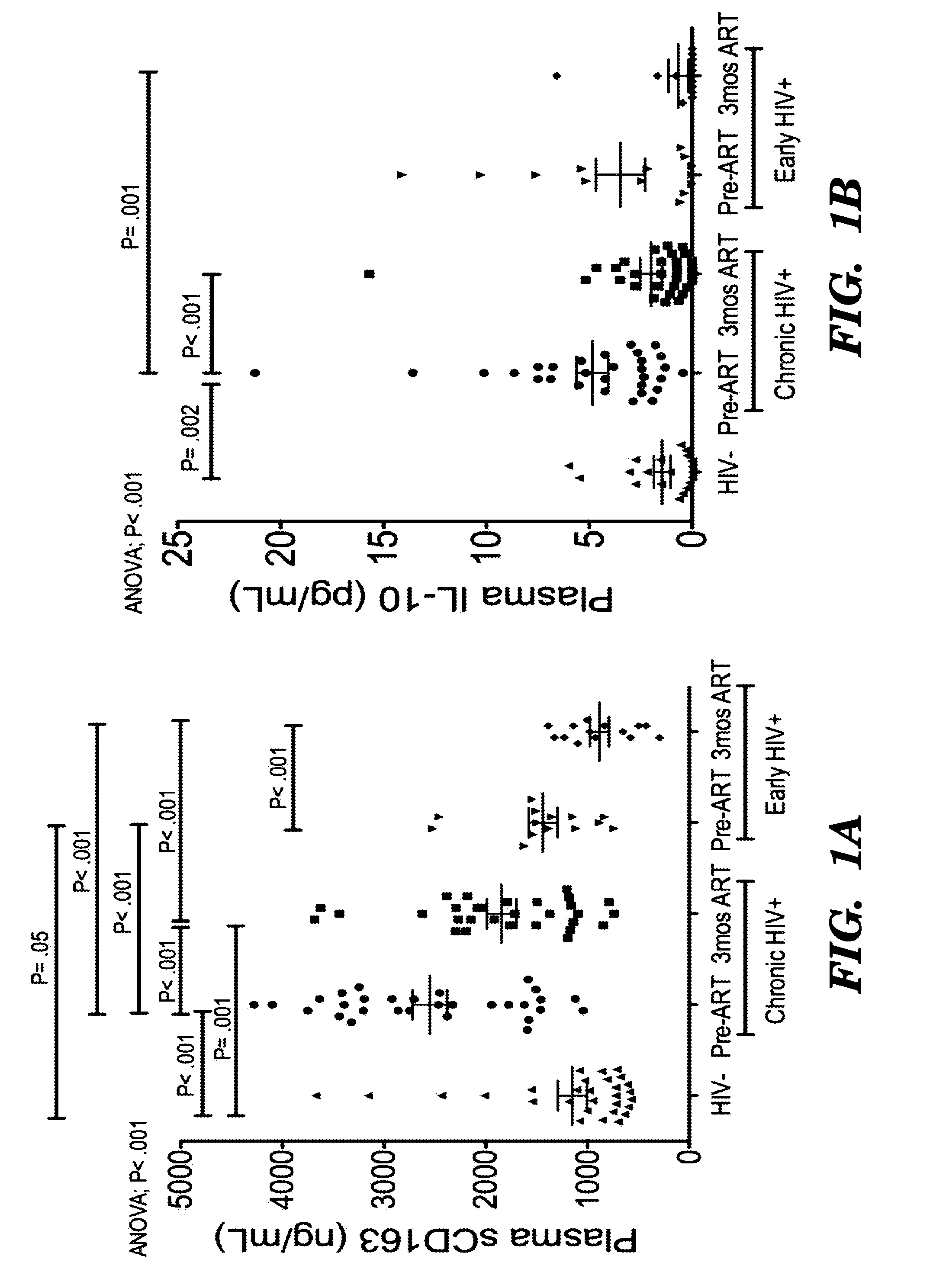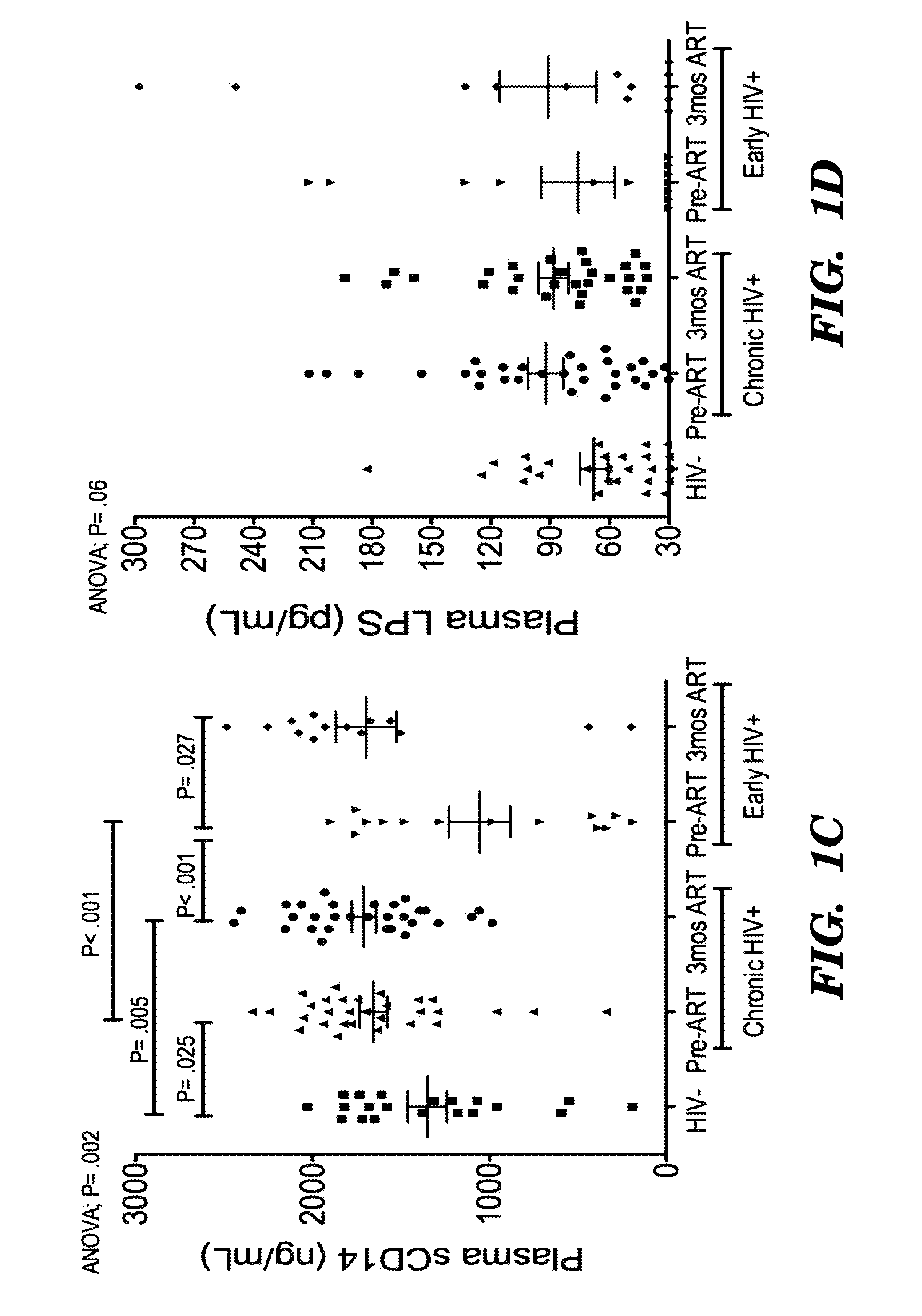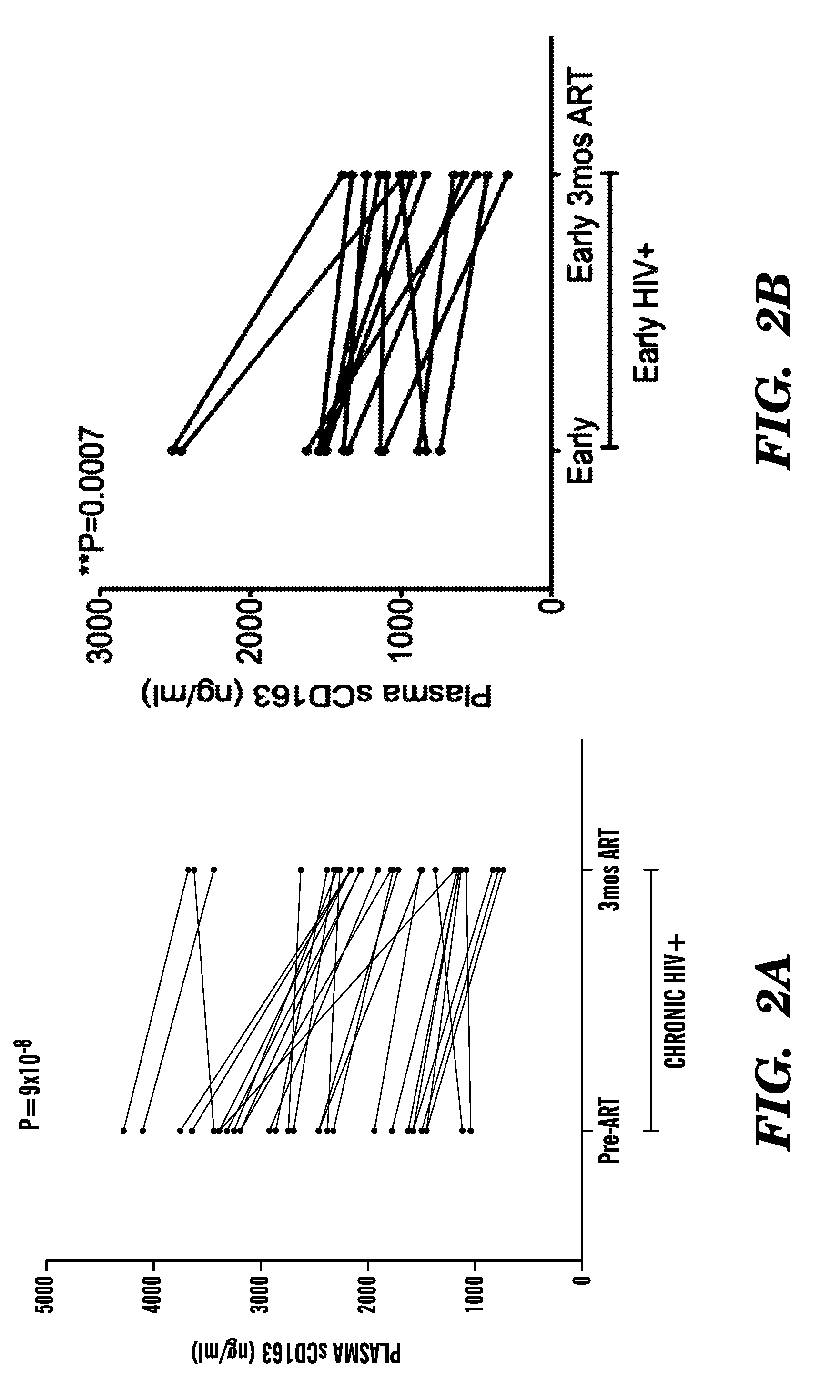Assays and methods for determining risk of a macrophage-mediated disease development in a subject infected with HIV
- Summary
- Abstract
- Description
- Claims
- Application Information
AI Technical Summary
Benefits of technology
Problems solved by technology
Method used
Image
Examples
example 1
[0163]CD163, a monocyte / macrophage-specific scavenger receptor, is shed during activation as soluble CD163 (sCD163). We have previously demonstrated that monocyte expansion from bone marrow with SIV infection correlated with plasma sCD163, the rate of AIDS progression and severity of macrophage-mediated pathogenesis. Here we examined sCD163 in HIV infection. sCD163 was elevated in plasma of chronically (>1 year) infected individuals compared to HIV-seronegatives. With effective antiretroviral therapy (ART), sCD163 declined in parallel to HIV-RNA, but did not return to HIV-seronegative levels, suggesting the presence of residual monocyte / macrophage activation even with plasma virus below the limit of detection. In early HIV-infected individuals (<1 year), effective ART resulted in decreased sCD163 comparable to HIV-seronegative levels. sCD163 in plasma positively correlated with the percentage of CD14+ CD16+ monocytes, activated CD8+ HLA-DR+CD38+ T lymphocytes and inversely with CD16...
example 2
[0210]Along with the traditional cardiovascular risk factors (including diabetes, smoking, hypertension, body mass and high serum cholesterol), HIV-infected individuals are predisposed to increased risk due to immune activation, chronic inflammation and viral factors. Here, 146 male subjects were examined (104 HIV-infected individuals and 42 HIV-seronegative) with similar coronary artery disease (CAD) risk factors, without history or symptoms of CAD. The HIV-infected men had a higher prevalence of coronary atherosclerosis (59 vs. 39%) and higher coronary plaque volume compared to HIV seronegative men (Lo et al 2010, AIDS). As atherosclerosis involves infiltration by monocyte-derived macrophages and is a macrophage-mediated disease, sCD163, which is shed solely by activated macrophages, as a marker of coronary atherosclerosis in HIV-infected subjects, was investigated (see e.g., FIG. 10A-10C). Plasma sCD163 was significantly elevated in HIV-infected individuals and in subjects with c...
example 3
[0249]We have further showed that persistent activation of monocyte-derived cells despite durable virologic suppression in HIV positive individuals on antiretroviral therapy (ART) may contribute to persistent and disabling neurocognitive impairment.
[0250]We evaluated whether neural injury (HAND; HIV-associated neurocognitive disorder) in durably virologically suppressed individuals is associated with persistent monocyte activation (as measured by sCD163). We hypothesized that durably virologically suppressed individuals with evidence of greater neural injury (HAND) will show elevated sCD163 compared to virologically suppressed subjects with lesser neural injury (no HAND).
[0251]We examined 34 HIV+ patients that had undetectable viral loads and measured sCD163 in plasma. Plasma sCD163 is elevated in HIV+ patients with impaired global deterioration score (GDS) compared to those HIV+ individuals with a normal GDS (P=0.006, Student t test). FIG. 13 shows the results of the comparison dem...
PUM
| Property | Measurement | Unit |
|---|---|---|
| Fraction | aaaaa | aaaaa |
| Time | aaaaa | aaaaa |
| Time | aaaaa | aaaaa |
Abstract
Description
Claims
Application Information
 Login to View More
Login to View More - R&D
- Intellectual Property
- Life Sciences
- Materials
- Tech Scout
- Unparalleled Data Quality
- Higher Quality Content
- 60% Fewer Hallucinations
Browse by: Latest US Patents, China's latest patents, Technical Efficacy Thesaurus, Application Domain, Technology Topic, Popular Technical Reports.
© 2025 PatSnap. All rights reserved.Legal|Privacy policy|Modern Slavery Act Transparency Statement|Sitemap|About US| Contact US: help@patsnap.com



